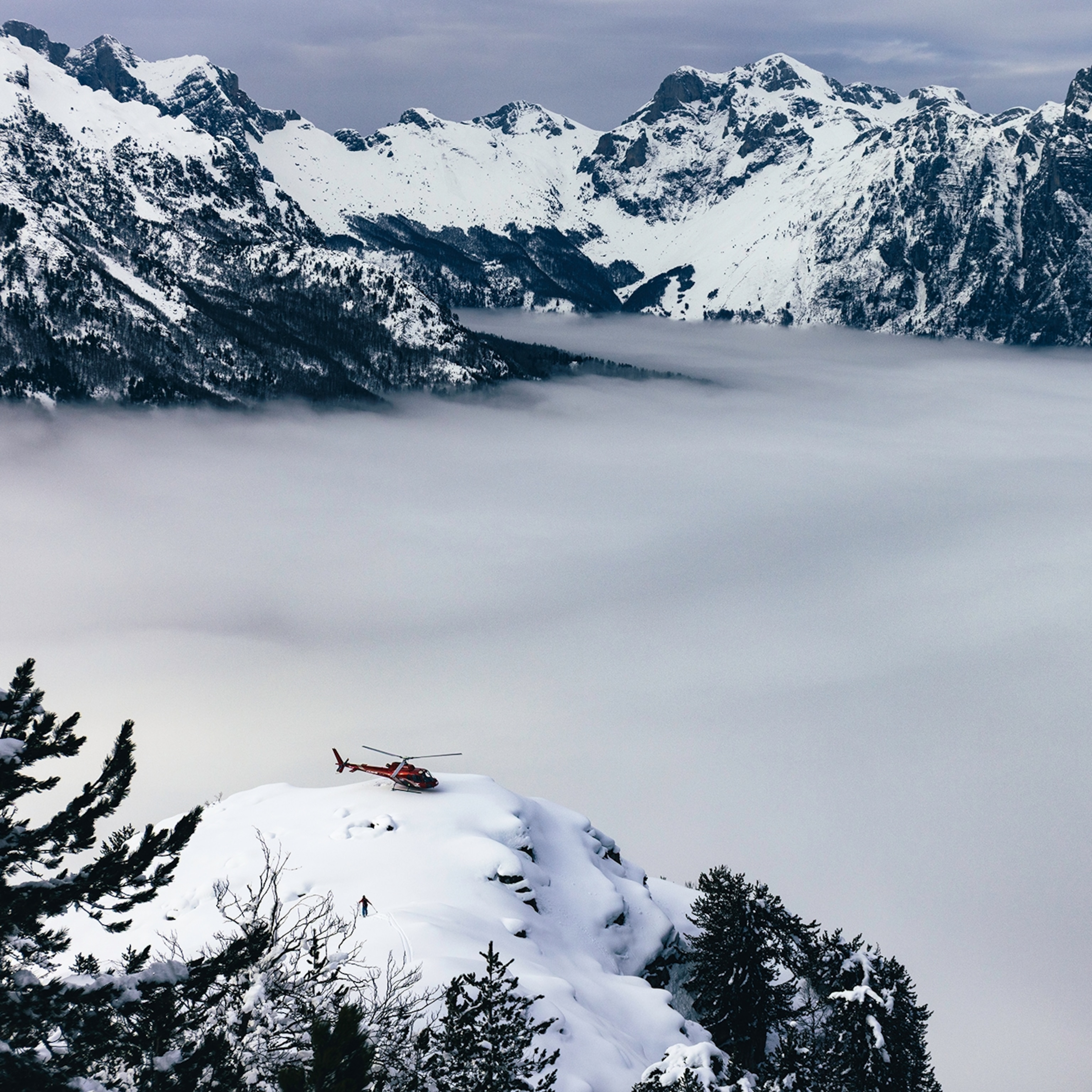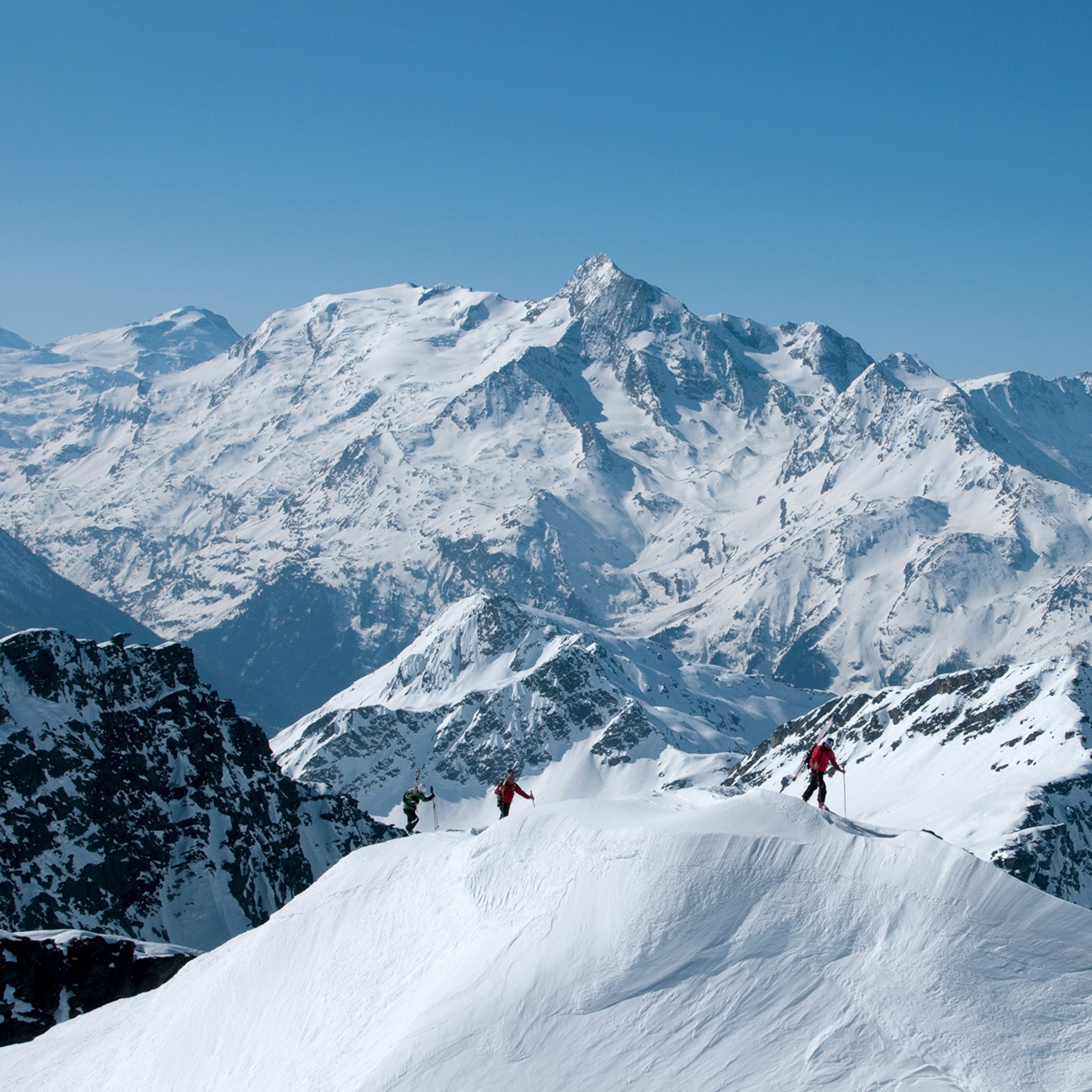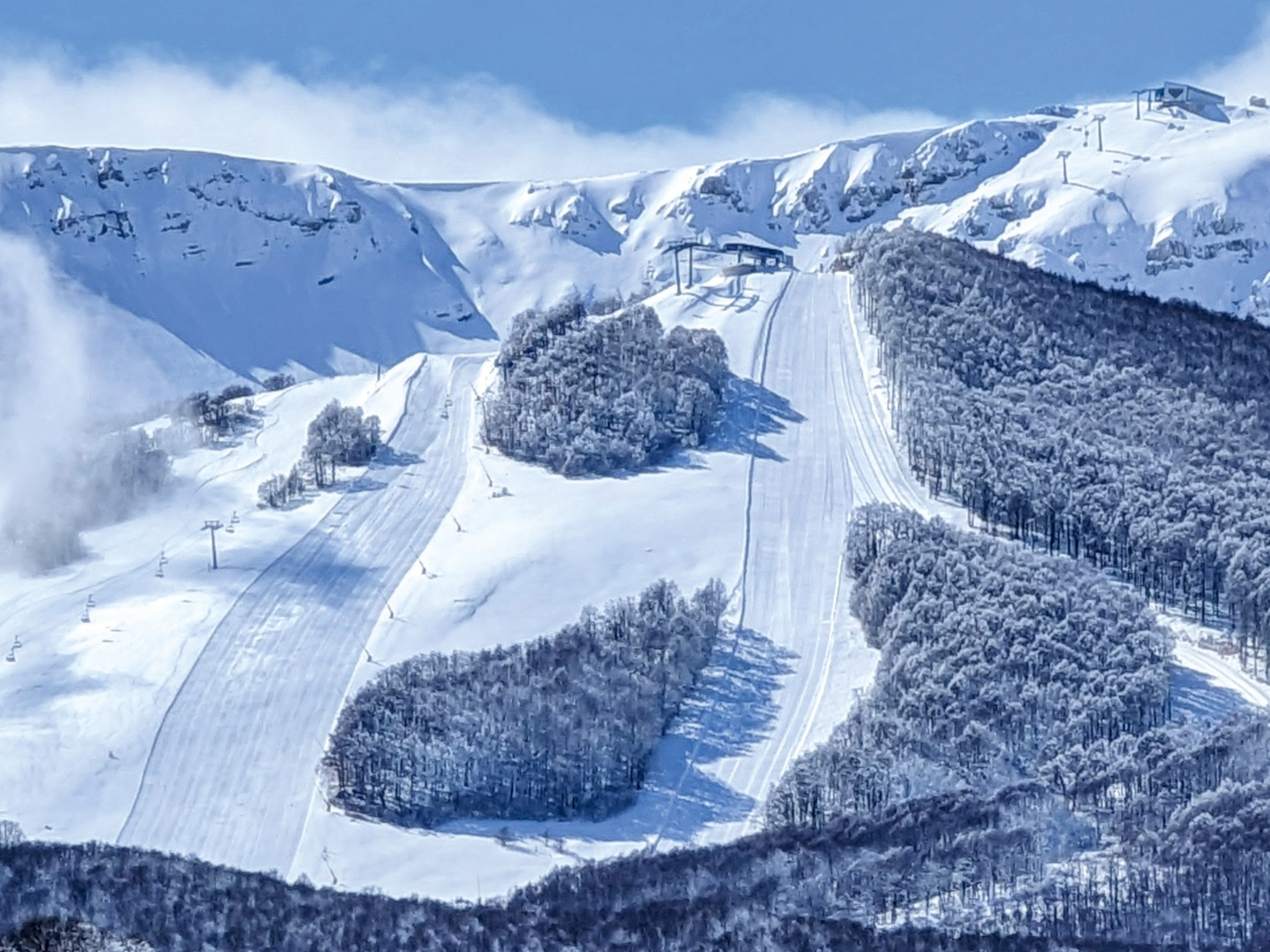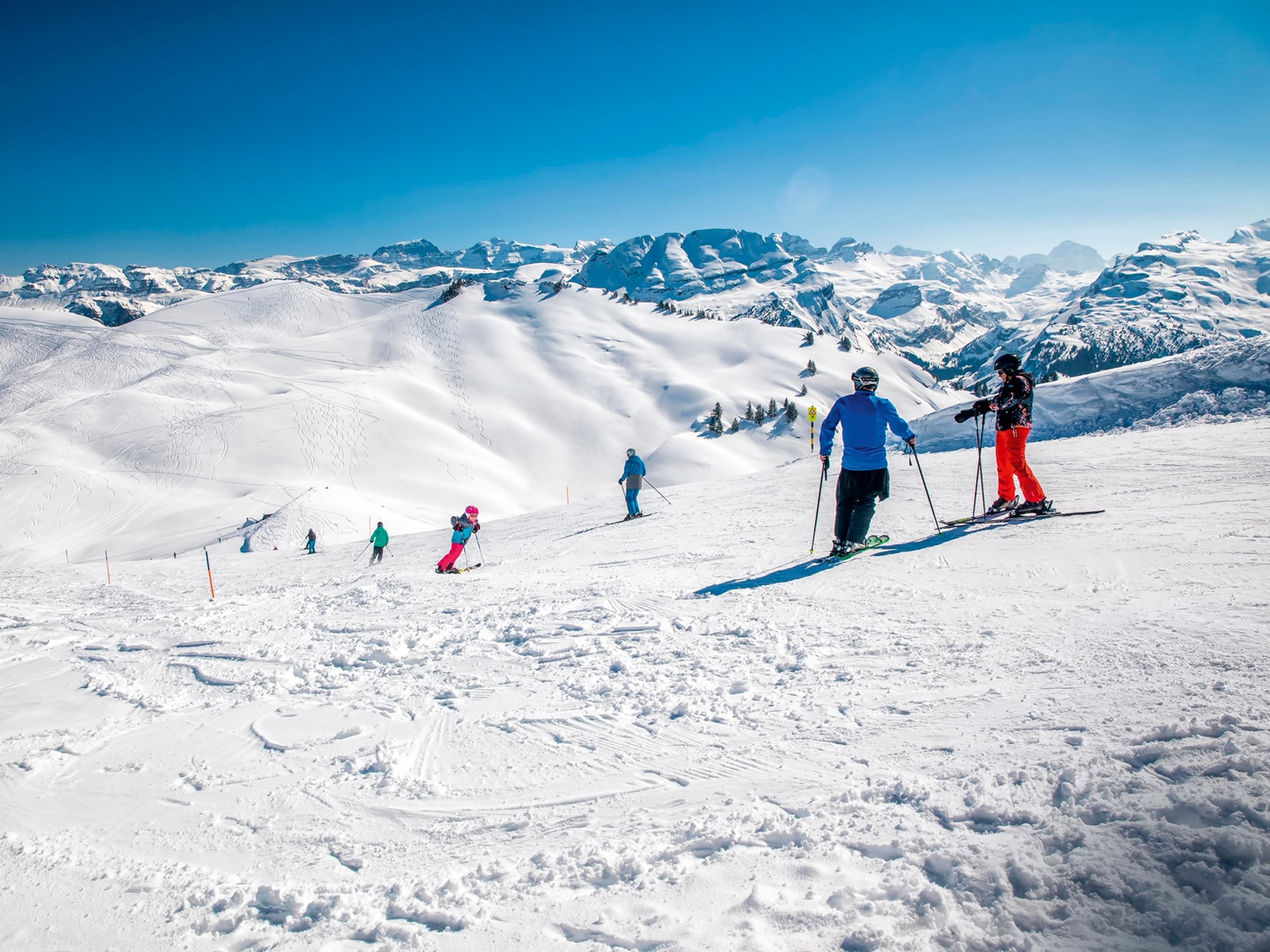Learn to Heli-Ski in These Magnificent Mountain Ranges
This thrilling winter sport isn't just for experts.
Ever want to stand at the top of a powder-covered backcountry bowl or big mountain chute and know you and your crew have it all to yourselves? It's the stuff of skiing dreams, but it's also the reality of heli-skiing. The freedom to fly promises an escape from in-bounds crowds and the chance to ski epic lines that nobody's touched since the last snowfall—or maybe ever.
You may feel like you're staring in a ski film, but you don't have to rip like a pro to take a heli-trip. Solid intermediates have plenty of options and little reason to fear for life and limb. Heli-skiing isn't nearly as dangerous as it looks, and outfitters include snow safety instruction. But be sure to show up with your quads in shape, because a heli-ski operation might log 20,000 vertical feet a day.
There are real mountain hazards to be managed, however, and many revolve around the cycles of weather and snowpack. Helicopters can't fly when the weather doesn't cooperate, and guides won't ski slopes that are likely to slide. No-fly days are an unfortunate reality, so when planning a trip to these powder paradises, be sure to explore travel insurance.
British Columbia's Bugaboos

Heli-skiing first got off the ground in British Columbia's Bugaboos. It’s there that mountaineer and heli-skiing pioneer Hans Gmoser pushed the sport forward, and the company he founded, Canadian Mountain Holidays (CMH), might still be the best place for first-timers to launch their own heli-skiing adventures.
CMH boasts a dozen luxurious, all-inclusive lodges scattered though three million acres of mountain playground, an area one-third of the size of Switzerland. Six of those lodges offer week-long Powder Intro courses for intermediate/advanced skiers who are new to the backcountry. For experts, there's a limitless array of steeps, bowls, drops, trees, and other backcountry gems on tap from December to April—and more advanced instruction available to help you crush them.
British Columbia's open forests deliver more than the best tree skiing you'll ever enjoy. They also provide some insurance against the changing weather, often allowing skiers to boot up even when visibility is poor above the tree line.
New Zealand's Southern Alps
Heli-skiing in New Zealand tends to be a bit different, and not only because it occurs when Northern Hemisphere skiers are on their mountain bikes between June and September. Rather than the all-inclusive backcountry lodges popular in North America, New Zealand typically offers accessible adventures from centers like Queenstown, Methven, Wanaka, and Mount Cook.
Skiers can stay where they please, from funky lodges to luxe hotels, and choose daily adventures based on the weather. The region's numerous heli-skiing outfitters deliver clients from hotel to helipad for a designated number of runs tailored to their emerging skills and, usually, an unforgettable picnic lunch atop a mountain peak.
The Southern Alps don't reach the heights of the world's great ranges, but they take a backseat to none when it comes to alpine scenery. And a one-day-at-a-time system makes getting your heli-legs a gradual learning process that's a lot more affordable. Unless of course you keep re-upping for more, which isn't at all unlikely.
Iceland's Troll Peninsula

The mountains of Iceland's Troll Peninsula may or may not harbor creatures of Icelandic legend. What they definitely do have is an enormous playground of rarely (and never) skied couloirs, chutes, and wide-open glaciers. These peaks may top out at only 5,000 feet above sea level, but they deliver plenty of vertical, since skiers will turn all the way down to the Arctic Ocean shoreline. The nation's original guides, Arctic Heli-Skiing, can instruct you in backcountry skills and teach you a bit about the country’s fascinating culture.
These coastal mountains are blessed with February powder days and winter nightlife there means soaking in volcanic hot springs and gazing at the northern lights, typically at their best from February to mid-April.
- National Geographic Expeditions
From April to June, Iceland serves up extra-long days. In fact, toward season's end, you might find yourself skiing until midnight and watching the glowing Arctic sun sink to the ocean's horizon. It doesn't set, but only pauses briefly before rising on another day of skiing—if your legs are up to the challenge.
Valdez and Haines, Alaska

Even on your first trip to Alaska, you may recognize the the chest-tightening, big-mountain steeps near Haines. That's because you're following in the tracks of the pros—these peaks are a proving ground where the world's best show off for the cameras of industry legends like Teton Gravity Research or Matchstick Productions. The jaw-dropping terrain is blessed with a permanent snowpack in the Saint Elias Range, which greedily soaks up moisture from the nearby ocean. Haines isn't a place for newbies, but when you're ready to tackle these lines, the area's elite guides can teach you how to rip them—and do so as safely as possible. Once you’ve become an expert, you can even train to become a guide yourself.
Alaska's other helicopter hot spot centers around Valdez, where despite a number of high-flying outfitters, it's anything but crowded. Just one venerable company, Dean Cummings' H20 Guides, serves up a swath of the Chugach Mountains nearly the size of Connecticut. Alaska's runs are outsized as well, averaging 3,000 to 5,000 vertical feet of faces, chutes, glaciers, and trees—all of it blanketed with 700 inches or more of annual snowfall. Once you learn to ski this kind of terrain, the local hill will have a tough time measuring up.
Because northern winters are cold and dark, the heli-skiing operations here typically crank up between March and April. And, because it's Alaska, down days do tend to happen a bit more often—but where else can you spend them learning to drive a sled dog team?












